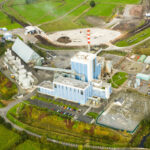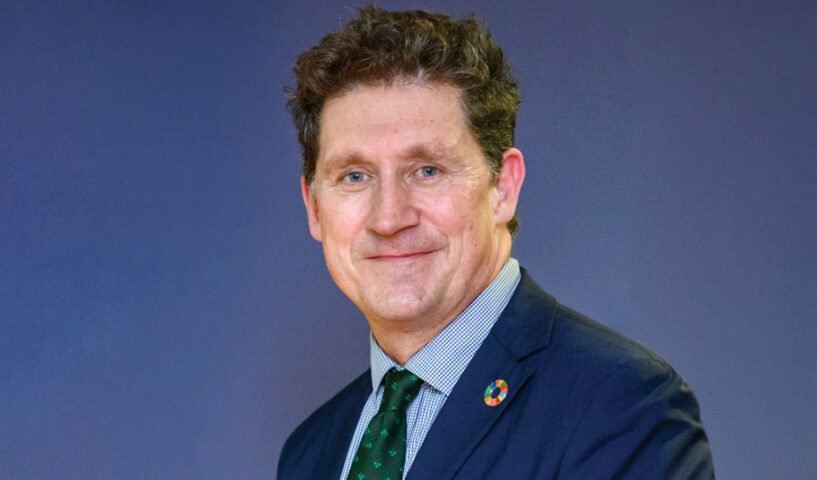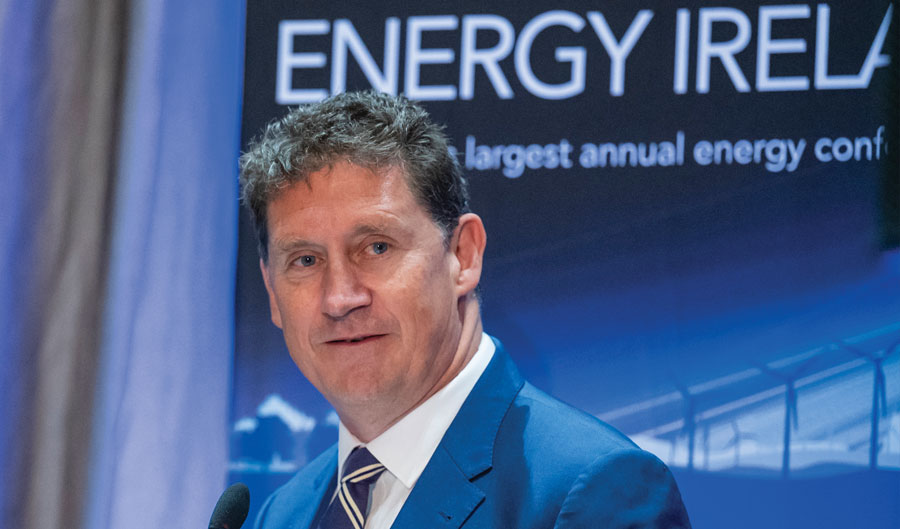
Cover: Winds of change
7th October 2024
Bord na Móna completes its brown to green transition
19th February 2024Minister Eamon Ryan TD: A bright and sustainable energy future

Minister for the Environment, Climate and Communications Eamon Ryan TD outlines progress made on the ambition for an energy-independent Ireland.
Ambition is the single most important characteristic for any government department and for any government minister, particularly when it comes to providing for the current and future energy needs of a growing and vibrant Ireland.
In the Department of Environment, Climate and Communications, our ambition has helped to create a world-class planning and regulatory environment for renewable energy that paves the way for an energy-independent Ireland, with a stable electricity supply at a stable price.
Our ambition looks beyond the traditional political cycle, and is boldly focused on the coming decades with a €100 billion energy strategy outlined in our Future Framework policy document.
This strategy sets out a clear roadmap to deliver 20GW of offshore wind energy by 2040, and at least 37GW in total by 2050. This is one of the most ambitious projects in the history of the State but, while we are ambitious for the future, we are delivering now.
As of today, there are six active planning applications for offshore wind projects which, in effect, are seeking final consent before starting construction – five are proposed for the Irish Sea and the sixth is located at Sceirde Rocks, off the coast of Connemara.
In a hugely competitive global offshore renewable energy market, international and domestic developers are prepared to invest €10 billion to see these projects through to completion. That is a resounding vote of confidence in Ireland’s offshore renewable energy strategy – four of the six applicants have already been awarded contracts by the State, accounting for the generation of 3.1GW of renewable energy, enough to power 2.4 million homes.
“As the term of this Government approaches its conclusion, I know that the ambition within this department will remain, and deliver a bright and sustainable energy future for everyone in Ireland.”
Minister for the Environment, Climate and Communications, Eamon Ryan TD
But that is just Phase I of our offshore renewable energy strategy, we are already working on the delivery of Phase II. As part of the Government’s new plan-led approach to offshore wind development, in May 2024, my department launched the State’s first draft spatial plan for renewable energy generation – the draft South Coast Designated Maritime Area Plan (SC DMAP). This plan identifies four areas off the south coast for the development of offshore renewable energy.
A six-week public consultation concluded in June 2024 and the draft South Coast DMAP will be laid before the Houses of the Oireachtas later in 2024. This process will initiate the State’s next offshore wind auction, delivering a further 900MW of renewable energy.
As we continue to develop our energy resources around the Irish coast, this plan-led approach ensures that the voices and concerns of coastal communities and other stakeholders, such as those reliant on the sea for their livelihoods, are heard and listened to through the planning and development phases of offshore infrastructure projects. It also ensures there are comprehensive environmental assessments designed to protect the marine environment and biodiversity.
Our ambition for renewable energy is not just offshore, but onshore too. The Renewable Electricity Support Scheme (RESS) is another cornerstone government policy aimed at achieving the ambitious target of 80 per cent renewable electricity by 2030. RESS supports the transition to a low-carbon energy system by providing a structured, auction-based framework that promotes competition among renewable electricity generation projects, including wind, solar, and other sustainable technologies.
RESS will continue to play a crucial role in promoting more affordable renewable energy generation and provide financial benefits to electricity users in Ireland through the associated Community Benefit Funds which will equate to approximately €4.1 million annually.
My department also has ambitious plans for district heating, which utilises a centralised heat source to heat multiple buildings across a potentially wide geographical area. This means that multiple types of centralised heat sources, including data centres, can be used to heat up to thousands of buildings across an entire, village, town, or city.
Deployment of district heating at scale, particularly in densely populated areas with ready-made heat sources located nearby, is a key government objective under the Climate Action Plan and a key component in meeting the Built Environment Sectoral Emissions Ceiling.
As well as existing district heating schemes already in operation, there is an additional pipeline of potential projects in the early stages of their lifecycles, and officials are working with local authorities and other heat network developers to assist those projects in moving on towards full development.
A National District Heating Centre of Excellence has also been established within the Sustainable Energy Authority of Ireland (SEAI), fulfilling a key recommendation to centralise the approach to development of the sector to ensure balanced and timely delivery of district heating networks.
Lastly, I will briefly outline our plans for a sustainable biomethane industry. The reality is that there are sectors of the economy where no alternative decarbonisation options exist, such as high temperature heat processes used in certain industries. That is where the National Biomethane Strategy comes in, with a commitment from the Government to support the delivery of up to 5.7 TWh of indigenously produced biomethane by 2030 – a significant increase on the 75 GWh currently being produced in Ireland each year.
Implementation of the strategy will require concerted action across key government departments and agencies to ensure the necessary supports and infrastructure are in place to support the biomethane industry. An integral part of the strategy is sustainable production. An early action for delivery will be the development of a Biomethane Sustainability Charter in consultation with policy, industry, and civil society stakeholders. The charter will support an agri-led biomethane industry, while protecting and restoring water, soil, biodiversity, and ecosystem services as processing plants are developed and commissioned.
Offshore and onshore renewable energy, district heating and biomethane are just some of the many ambitious energy strategies being led by the Department of Environment, Climate and Communications.
As the term of this government approaches its conclusion, I know that the ambition within this department will remain, and deliver a bright and sustainable energy future for everyone in Ireland.

